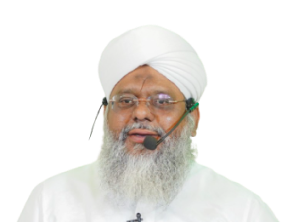
Dr. Mufti Syed Ziauddin Naqshbandi Mujaddidi Qadri
Shaykh Ul Fiqh, Jamia Nizamia; Founder - Director



Hadhrat Maulana Mufti Muhammad Abdul Hameed (May Allah shower His mercy on him) was a towering personality of the subcontinent. He was highly erudite and pious.
He is a descendent of Hadhrat Abu Bakr Siddiq (May Allah be well pleased with him).
His ancestors came from Afghanistan and passed through Srirangapatnam, Shahnoor before settling down in Bidar. His forefather, Hadhrat Mahmood Hussain (May Allah shower His mercy on him), came to Deccan in the era of the sixth Nizam of Hyderabad. He was a very pious person who led a very simple life. He was appointed to teach at Jamia Nizamia. He performed this duty to the end of his life.
Hadhrat Abdul Hameed was the son-in-law of the great Muhaddith, Hadhrat Yaqoob (May Allah shower His mercy on him) and was also related to Hadhrat Mufti Raheemuddin (May Allah shower His mercy on him).
Dr. Abdul Haq, the HOD of the Arabic Department of Osmania University, was his paternal uncle. He was a great expert of Arabic language and was associated with many international Arabic organizations and was also the editor of many Arabic magazines.
He was born in Mughalpura in 1906 i.e. 1323 Hijri.
He completed all his education in Jamia Nizamia. He was considered to be great scholar in Arabic literature, Islamic sciences, Tafseer, Hadith, Fiqh, logic and philosophy. Allah Ta’ala had granted him great status in all sciences.
He had a very dignified personality. He had a wheatish complexion and with his high forehead, he looked all the more noble and upright.
His company was always one of knowledge. In conformity with the Sunnah, he would always wear the turban.
He was very fastidious about matters of cleanliness. He had a very truthful nature and would always stay from popularity.
His life was a model of the Holy Quran and the Sunnah. Along with the fulfilling the Faraaidh (obligatory acts) and the Wajib (compulsory) acts, he would also follow the Mustahab (commendable) and the etiquette.
He had an excellent legal acumen. People would take his advice in their complex issues and he would treat everyone with the same affability.
As in his period of education, even after it he did not travel that much outside Hyderabad, but he illuminated the world with his knowledge. He had been blessed with the divine knowledge (Ilm Ladunni). All the contemporary scholars acknowledged his superiority in knowledge. His style of teaching was very beautiful. He had such command over the references that he never had to refer to a book to check any. His lessons were such that every student desired to study under him. He would all cover all the aspects of the topic at hand. After listening to his lectures, students didn’t have to refer to any other commentary for that book.
He had no equal in reconciling apparently contradictory Hadith, the proofs of the 4 schools of Islamic Fiqh and the reason why the Hanafi school of Fiqh is the preferred one. Allah had granted him a prodigious memory. He would teach Hidayah and other such canonical books right from memory. He would unravel the most complex issues in the most succinct manner. Allah had opened the very gateways of knowledge on him. He was also an expert in interpretation of dreams and would interpret the most complicated of dreams in the blink of an eye.
He was also a poet of Arabic. His students have in turn become teachers/founders of institutions in various national/international institutions.
Apart from this, his efforts for the uplifting of the Ummah and the community are also undeniable. He was the member of Majlis Ulama-e-Deccan, All India Muslim Personal Law Board and Majlis Ihya Ul Ma’arif An No’maniya. He was also the patron of Majlis Anwar-e-Ilmiya and the chief of Majlis Ihya Ul Uloom.
As Ameer-e-Millat, he guided the community and created religious awareness among Muslims on every front. He made special efforts for the unity of Muslims.
His writings and speeches would be substantive and meaningful. There are many published and unpublished writings of him on various subjects. His writings would be published as “Khutbaat-e-Juma’a,” which would be read out in Masjid.
The following are his published works:
1. Muslim Personal Law.
2. Khatm Nubuwwat.
3. Haqiqate Fatiha
4. Istia’anat Bil Auliya
5. Imarat e Millat e Islamiya Quran wo Sunnat Ki Roshni Mein
6. Islam Mein Zakaat Ka Nizaam
7. Ma’ariful Anwaar on the life of Hadhrat Shaykh Ul Islam Imam Muhammad Anwarullah Farooqui.
8. Urdu translation of Risalatus Siyaam ‘Ala Madhahibil ‘Arba’a
9. Explanatory notes on Nazam Ud Durar
10. Multiple papers on Imam Azam Abu Hanifa (May Allah be well pleased with him)
11. A very comprehensive paper on Tasawwuf Wa Ihsaan
12. Another paper on Qalbe Saleem
His teaching career extended for over 40 years. He passed away after Salaat Ul Maghrib at the age of 71 in Shawwal of 1379 Hijri, which corresponds to October 6, 1977.
[Excerpted from Muraqqa-e-Anwaar, Pg. No. 609-611]